Photographs have the power to capture moments that define history, evoke emotions, and shape our understanding of the world. From spontaneous instances of everyday life to meticulously staged portraits, some images transcend time and place, becoming iconic symbols of their eras. In this article, we explore the 8 most iconic photographs in history, delving into the stories behind these powerful images and examining their lasting impact on society.
The Steerage by Alfred Stieglitz (1907)
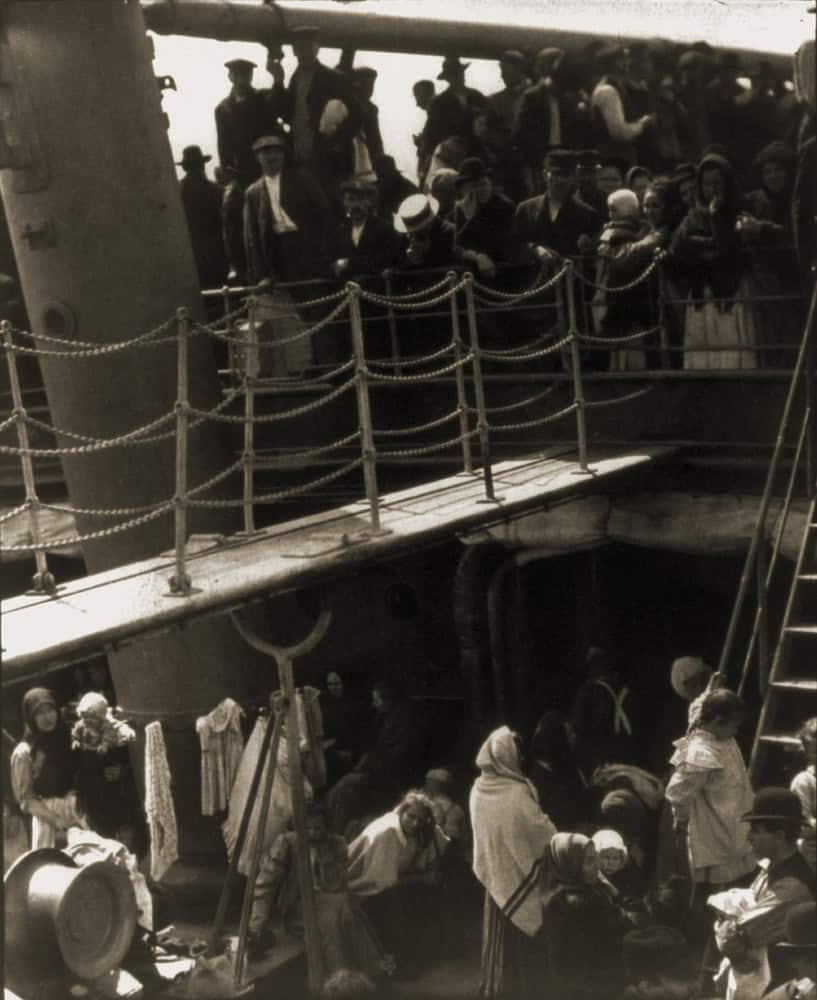
Alfred Stieglitz’s “The Steerage” is considered one of the first modernist photographs. Captured during a voyage from the United States to Europe, this image presents a stark contrast between the affluent upper deck and the crowded lower deck of a ship. The photograph’s composition and its portrayal of the divide between social classes have made it a seminal work in the history of photography. Stieglitz’s keen eye for detail and his ability to convey the complexities of the human condition are what make this image truly iconic.
Lunch Atop a Skyscraper (1932)
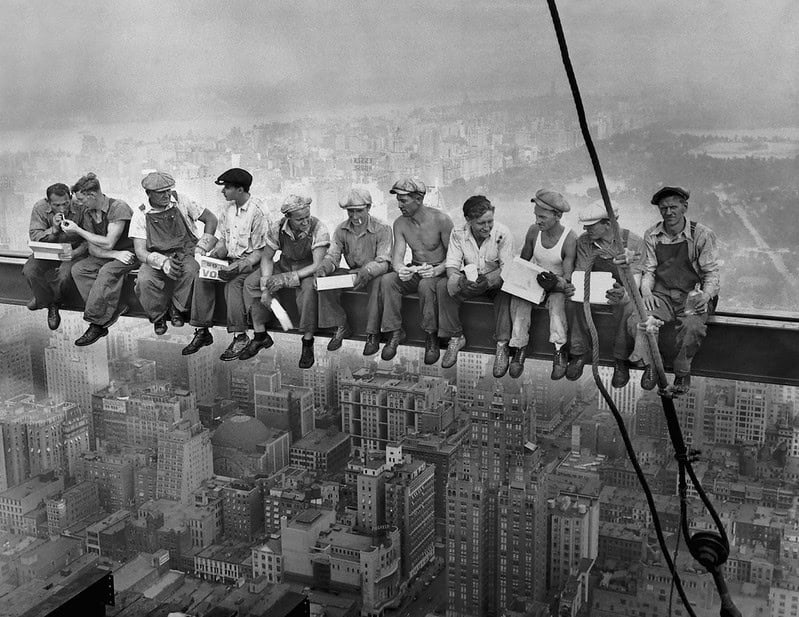
This iconic photograph shows eleven construction workers nonchalantly eating lunch on a steel beam high above New York City during the construction of the Rockefeller Center. Despite the dizzying height and lack of safety equipment, the men appear relaxed and casual. The image symbolizes the courage and resilience of American workers during the Great Depression and has become a powerful representation of the spirit of an era. Though staged for publicity, its impact and depiction of human bravery are undeniable.
Migrant Mother by Dorothea Lange (1936)
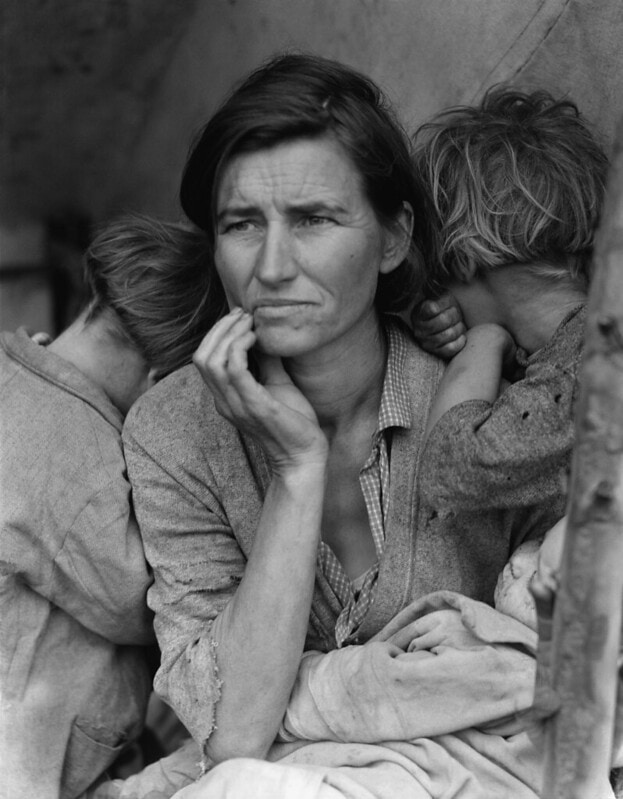
Dorothea Lange’s poignant photograph of Florence Owens Thompson and her children during the Great Depression is a powerful symbol of resilience and maternal strength. Taken in a migrant camp in Nipomo, California, this image was part of Lange’s work for the Farm Security Administration, aiming to highlight the plight of impoverished farmers. The expression of worry and determination on Thompson’s face, combined with the protective postures of her children, captures the hardship and hope of the era, making it a quintessential image of American history.
Hindenburg Disaster by Sam Shere (1937)
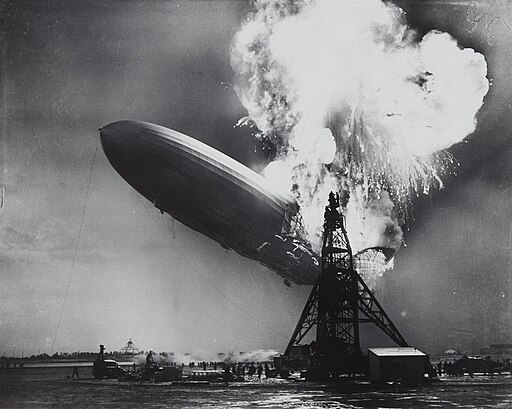
Sam Shere’s photograph of the Hindenburg airship bursting into flames as it attempted to land in New Jersey is a harrowing depiction of one of the most famous disasters in aviation history. The image, captured in the chaos of the moment, shows the massive airship consumed by fire, with the structure collapsing as onlookers flee. The photograph’s immediacy and the scale of the disaster it portrays have made it an enduring symbol of the end of the airship era, capturing a pivotal moment in history with stark clarity.
The Roaring Lion by Yousuf Karsh (1941)
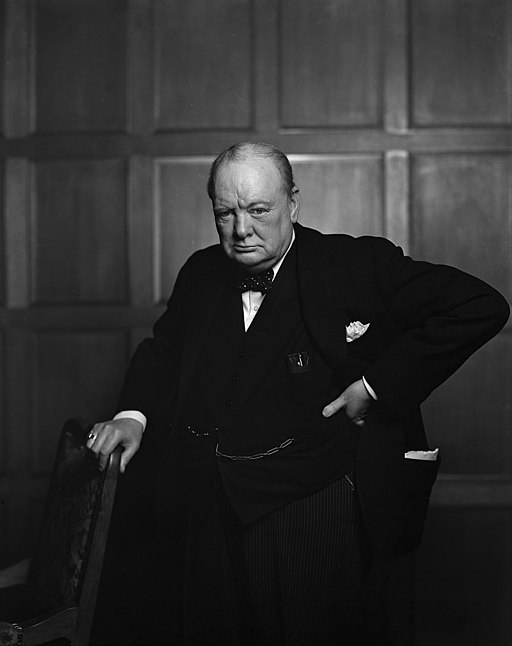
This iconic portrait of Winston Churchill, taken by Yousuf Karsh, captures the British Prime Minister’s defiant and resolute demeanor during World War II. Taken shortly after Karsh removed Churchill’s cigar from his mouth, the resulting scowl perfectly encapsulated Churchill’s tenacity and determination. The photograph’s powerful expression and impeccable composition have made it one of the most reproduced images of the 20th century, symbolizing the steadfast spirit of a leader during one of history’s darkest times.
V-J Day in Times Square by Alfred Eisenstaedt (1945)

Alfred Eisenstaedt’s photograph of a sailor kissing a nurse in Times Square on V-J Day is one of the most celebrated images of spontaneous joy and relief marking the end of World War II. The exuberant kiss, shared between strangers, captured the collective euphoria of a nation celebrating victory. The image’s enduring appeal lies in its depiction of a spontaneous, joyful moment amidst a backdrop of global conflict, making it a timeless symbol of peace and happiness.
Raising the Flag on Iwo Jima by Joe Rosenthal (1945)
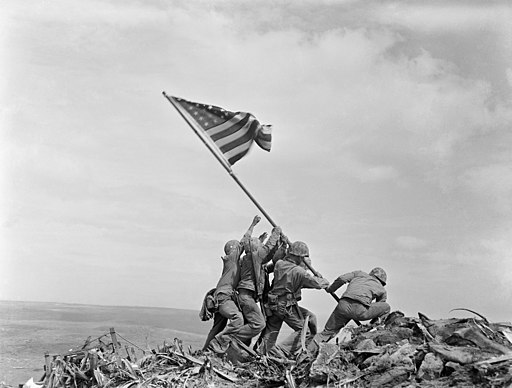
Joe Rosenthal’s photograph of six Marines raising the American flag atop Mount Suribachi during the Battle of Iwo Jima is an enduring symbol of American perseverance and victory. The image, which won a Pulitzer Prize, has been widely reproduced and memorialized, most notably in the Marine Corps War Memorial in Arlington, Virginia. The photograph’s composition and the strength and determination it conveys have made it one of the most iconic images of World War II, symbolizing unity and sacrifice.
Einstein’s Tongue by Arthur Sasse (1951)
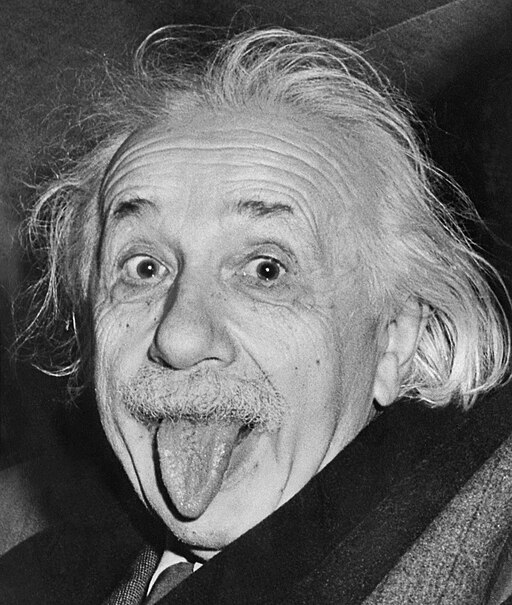
Arthur Sasse’s playful photograph of Albert Einstein sticking out his tongue on his 72nd birthday captures a rarely seen, lighthearted side of the renowned physicist. This candid moment contrasts sharply with the serious demeanor typically associated with Einstein, humanizing one of the greatest minds of the 20th century. The photograph’s widespread appeal lies in its ability to show the whimsical and approachable personality behind the scientific genius, making it one of the most beloved images of Einstein.
This article originally appeared on Rarest.org.
More from Rarest.org
20 Most Expensive Silver Coins in History

Collecting rare silver coins is a fascinating hobby that blends history, artistry, and investment. Some of the most coveted coins have reached staggering prices due to their rarity, historical significance, and intricate designs. Read more.
20 Animals with Astonishing and Unique Features

The animal kingdom is full of fascinating creatures with extraordinary features that defy imagination. From the regenerating limbs of the axolotl to the luminous lure of the anglerfish, these unique animals showcase the incredible diversity and adaptability of life on Earth. Read more.
16 Endangered Animals You Can Still See in the Wild

Witnessing endangered animals in their natural habitat is a rare and awe-inspiring experience. These creatures face numerous threats but still roam the wild in certain parts of the world. Read more.
